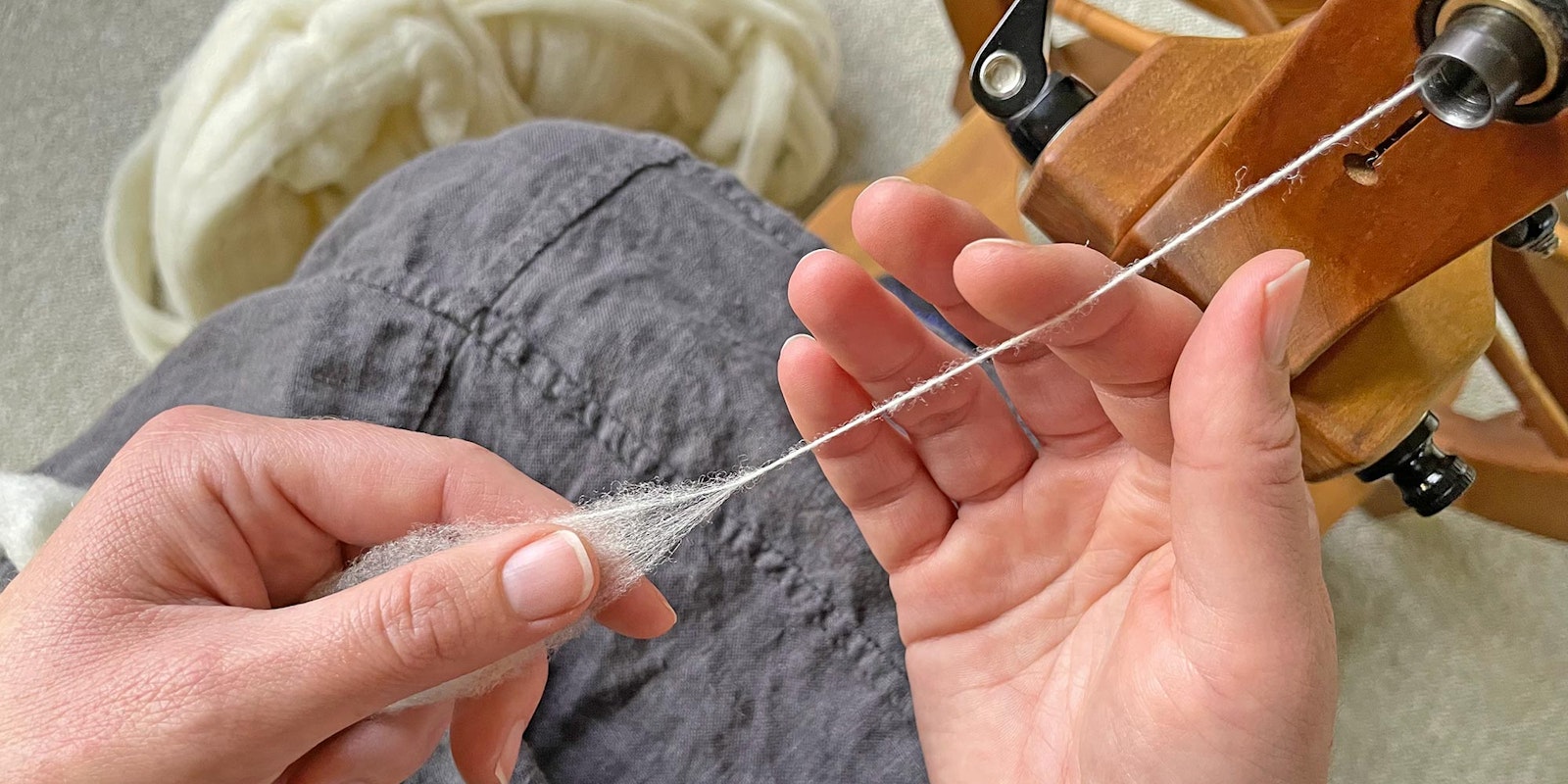When I was first becoming part of the spinning community nearly two decades ago, I heard a lot of dismissive comments about wool from “meat sheep.” At the time, there was an emphasis in the community on fineness and softness as superior characteristics. Merino and Bluefaced Leicester were in high demand. However, breeds I loved spinning—Suffolk, Tunis, Dorset—with their buoyant, hardwearing fleeces were dismissed as only useful for meat production rather than wool production.
 Sheep raised primarily for meat production might be purebred Suffolks, Hampshires, etc., but many flocks have crossbreds. In the United States, these are often referred to as “commercial flocks,” and the individual sheep might have characteristics of multiple breeds. Photo by Camille La Brequa on Unsplash
Sheep raised primarily for meat production might be purebred Suffolks, Hampshires, etc., but many flocks have crossbreds. In the United States, these are often referred to as “commercial flocks,” and the individual sheep might have characteristics of multiple breeds. Photo by Camille La Brequa on Unsplash
Before I started connecting with other spinners, I spent 10 years spinning whatever I could get my hands on. Often this was fleece from small-scale 4H producers or hobby farms; so much of what I could access was from “meat sheep.” The breeds that first come to mind are Suffolk and American Tunis, two of my favorite breeds to spin. I can add more British breeds, such as Dorset and Hampshire, and arguably some of the feral/rare breeds, such as Hog Island and Gulf Coast Native.
 Charis Walker shears one of her American Tunis sheep, and you can see the square, blocky staples in the fleece. Learn more about Charis and her flock here. Photo courtesy of Charis Walker
Charis Walker shears one of her American Tunis sheep, and you can see the square, blocky staples in the fleece. Learn more about Charis and her flock here. Photo courtesy of Charis Walker
Fleece Character
The majority of these breeds have fleece that I find to have similar characteristics: a staple length usually between 2 and 4 inches; locks are often chunky and square; and a sponginess to the staples, which spins into a satisfyingly round yarn. I have found most of these breeds fleeces have a creamy color rather than a clear bright white, and (as they are usually raised without a spinner in mind) tend to have a little more vegetable matter than fleeces raised specifically for handspinning.
 Suffolk fleeces often contain more vegetable matter simply because wool production is not often the shepherd’s focus. However, most debris will simply fall out of these open fleeces during processing. Photo by Devin Helmen
Suffolk fleeces often contain more vegetable matter simply because wool production is not often the shepherd’s focus. However, most debris will simply fall out of these open fleeces during processing. Photo by Devin Helmen
Preparation
These fleeces are easy to wash. I have found the fleece and resulting yarn difficult to felt by accident and often difficult to felt even intentionally. Once washed and dried, they are easy to prepare for spinning when carded. Handcards, drumcarders, and flick cards are all great options depending on the particular fleece. I rarely comb any of these breeds.
 Devin’s handspun Tunis sweater. After washing, they handcarded the fleece and spun it into a 2-ply yarn before dyeing with indigo. Photo by Devin Helmen
Devin’s handspun Tunis sweater. After washing, they handcarded the fleece and spun it into a 2-ply yarn before dyeing with indigo. Photo by Devin Helmen
Wool at Work
The short to medium staple length of these fleeces and crimpy bounce are perfect for spinning with a long draw. I love working with these wools on drop spindles, spinning wheels, and e-spinners. This is my comfort spinning.
The complaints I would hear about wool from “meat sheep” was that it was coarse and scratchy. I have never found it so, though it is different from finewools. I actually find Tunis easier to spin than Merino, and I love wearing my finished garments. I have never encountered a fleece that I have processed myself from a Suffolk or Dorset or Tunis sheep that felt harsh in the lock or yarn.
I particularly like using these fleeces to make socks and everyday sweaters; garments that will take a lot of wear and tear, standing up to hard use. When I make a garment, I want it to last as long as possible and look good while doing so.
Thankfully, fashions change, and through the effort of many teachers and shepherds, wool enthusiasts, and sheep organizations, spinners can learn about the fiber from many more sheep breeds than ever before. Programs such as Shave ‘Em to Save ‘Em by the Livestock Conservancy have done a fantastic job of connecting shepherds and fiber producers to spinners. I highly encourage you to try as many breeds of wool as you can and see if you develop a new favorite.
Ready to dive deeper into other down and down-like sheep breeds? Check out our eBook Down and Related Sheep Breeds, which includes a fascinating article by Deb Robson on down wools and focused articles and projects for four specific breeds.
Are you an All Access subscriber? You can head to the Spin Off Library and log in to instantly access the eBook.
Devin Helmen has been immersed in fiber since learning to spin at age 8. They spin, knit, and weave in beautiful Minnesota. Devin enjoys writing and teaching about fiber arts and has a passion for spindles and everyday textiles. They blog, intermittently, at afewgreenfigs.blogspot.com.

